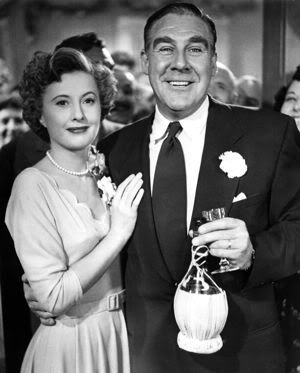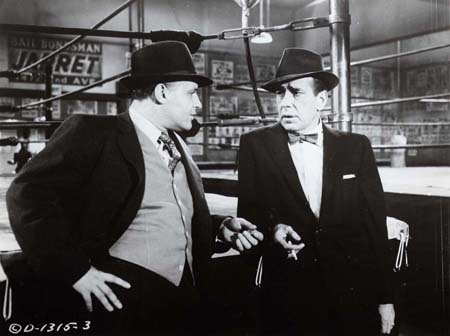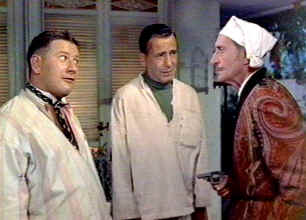
The screwball comedy genre was at its peak in the 1930s. The master of the screwball comedy was Cary Grant. His proper English accent and refined manners went perfectly with scripts that were absurd. By the time 1952 rolled around though, Grant was known equally for his comedic abilities and his dramatic acting skills. Monkey Business (1952), not to be confused with the Marx Brothers movie of the same name released in 1931, is a return for Grant to the genre that made him famous.
Howard Hawks was brought on to direct the picture. Like Grant, Hawks was capable of directing both great comedies and outstanding dramas. Hawks had the distinction at this time as being one of the few
Playing opposite Cary Grant was the great musical actor, Ginger Rogers. The two are great as Barnaby and Edwina Fulton. Our story revolves around the couple. Barnaby is a scientist who is working on a drug that will make people young. The idea of becoming young through a drug or potion seems to be a popular one even today.
Barnaby believes he has found the correct formula. His absent mindedness prevents him from remembering just what it was though. Luckily for him chance, and a screenwriter, helped him out as a monkey in the lab decided to mix some chemicals together and then pour them into the water cooler. This concoction is just what Barnaby was looking for. He takes a sip from the tainted cooler and immediately acts young again.
He no longer needs his glasses. He runs out and buys a sports car. He takes his bosses secretary, Lois Laurel, played by Marilyn Monroe, on a joy ride. The two go swimming and roller skating together and Barnaby even gets a young man’s haircut. All this thrills Barnaby and Lois. It frightens his boss, Mr. Oxley. It disgusts his wife Edwina, who becomes very jealous of the relationship Barnaby and Lois have.
Of course since the formula was not discovered by Barnaby, but actually present in the water cooler, anyone has access to the formula. Edwina is the next to become young after Barnaby regains his age and poor eyesight. She becomes a young troublemaker who wants to relive her honeymoon night with Barnaby. Of course the couple spent their honeymoon down in
When they arrive at the hotel, Edwina finds out there is a ballroom where swing dancing is going on. Of course she wants to do this and the aged Barnaby can not keep up with the teenage acting Edwina. This allows the audience to see Ginger Rogers dance though, which is something everyone expects when they see a movie with Ginger Rogers in it.
After some troubles that night, in which Edwina calls her mother and old boyfriend and wants to divorce Barnaby, the effects of the potion wear off. Edwina and Barnaby make up, but the damage Edwina did to their relationship that night still has to be resolved as her mother and former boyfriend along with the press are at their house when they arrive around midday.
From here the formula for the potion is torn up by Barnaby, as he feels the public is not ready for such a drug. Of course we know the reason why everyone is behaving so oddly is because of the water cooler. This is lost on Barnaby and Edwina. They both turn younger and it is up to Mr. Oxley to try and find out what the formula was from the young Barnaby so that he can make his own transformation as well as a ton of money by marketing the product.
The movie ends, as most screwball comedies do, with a huge climatic scene filled with zaniness. Then everyone lives happily ever after once the problem, in this case the tainted water, is discovered and rectified. The water is poured out and the cooler cleaned so nothing like this would happen again.










